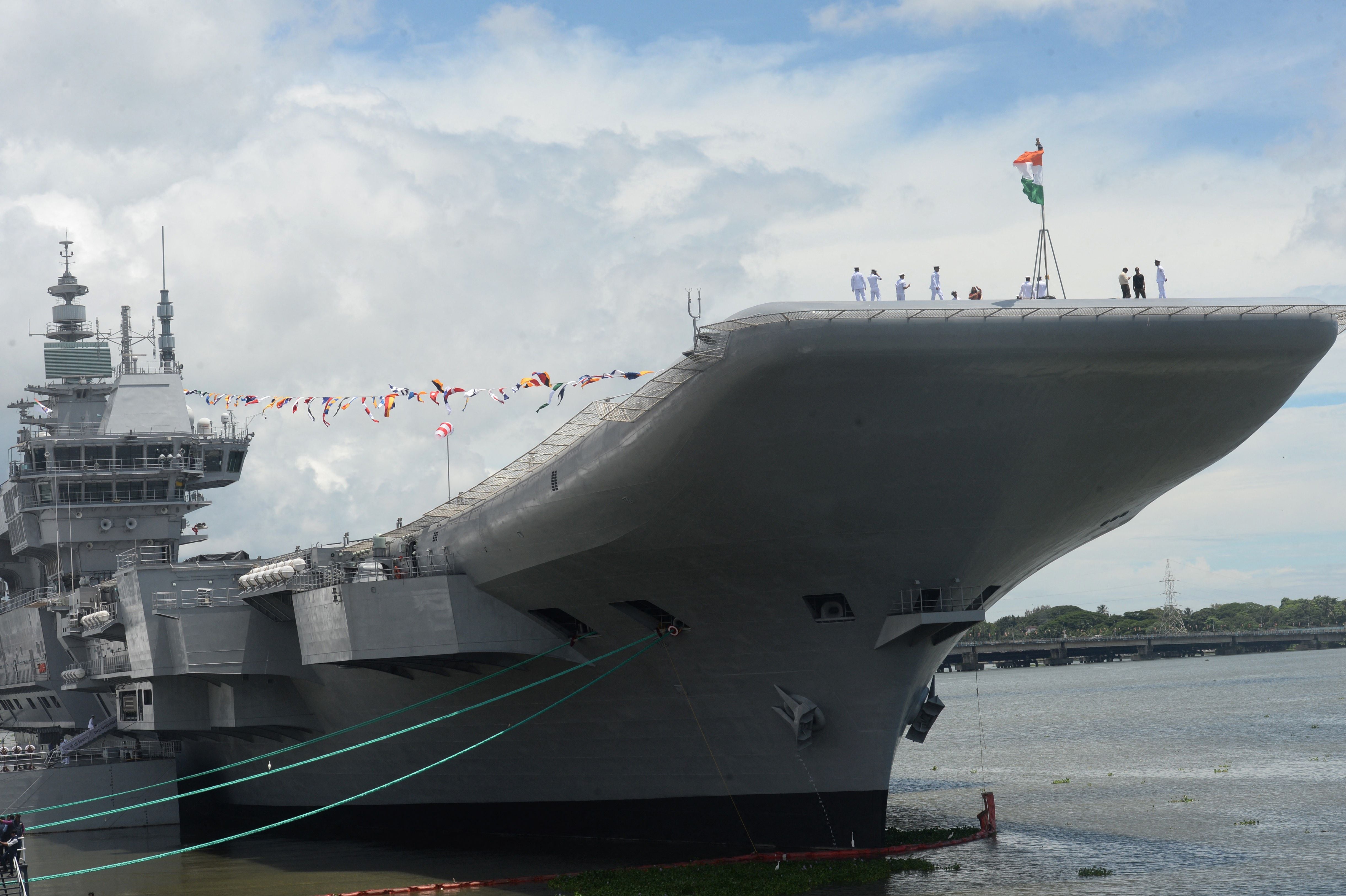Narendra Modi commissions India’s first domestically produced aircraft carrier in major advance for military
British-origin aircraft carrier played important role in several military operations, including 1971 Bangladesh war, before being decommissioned in 1997

Your support helps us to tell the story
From reproductive rights to climate change to Big Tech, The Independent is on the ground when the story is developing. Whether it's investigating the financials of Elon Musk's pro-Trump PAC or producing our latest documentary, 'The A Word', which shines a light on the American women fighting for reproductive rights, we know how important it is to parse out the facts from the messaging.
At such a critical moment in US history, we need reporters on the ground. Your donation allows us to keep sending journalists to speak to both sides of the story.
The Independent is trusted by Americans across the entire political spectrum. And unlike many other quality news outlets, we choose not to lock Americans out of our reporting and analysis with paywalls. We believe quality journalism should be available to everyone, paid for by those who can afford it.
Your support makes all the difference.India’s prime minister Narendra Modi has commissioned the country’s first indigenously built aircraft carrier INS Vikrant amid growing concerns of neighbour China adding to its own carrier fleet.
At the commissioning event in Cochin on Friday, Mr Modi said it is a historic day and called it a “landmark achievement”.
“It’s an example of the government’s thrust to make India’s defence sector self-reliant,” he said.
The British-origin aircraft carrier was first bought by India from the UK in 1957. Its construction work was subsequently completed, and it was commissioned in the Indian Navy as INS Vikrant in 1961.
It played an important role in several military operations, including the 1971 Bangladesh Liberation war against Pakistan, before being decommissioned in 1997.
The aircraft carrier has been commissioned as a part of celebrations marking India’s 75th year of indepedence from British rule.
“The induction and reincarnation of Vikrant is not only another step towards strengthening our defence preparedness, but also our humble tribute to the sacrifices made by our freedom fighters for the Independence of the nation and our brave soldiers during the 1971 war,” the Indian Navy said in a statement.
The 47,400-ton warship will be fully operational by the end of 2023 after undergoing landing trials with the MiG-29K fighter aircraft.
With this, India has now joined the ranks of other countries such as the US, Russia, France, the UK and China, which can design and construct home-grown aircraft carriers.
Alex Ellis, the British high commissioner to India, was present at the commissioning event in Cochin on Friday.
He said that the achievement will ensure the seas remain “open and free” for all.
The ship has 18 floors and close to 2,400 compartments, and can house 1,600 crew members, according to The Indian Express.
The aviation hangar is about the size of two Olympic-size pools and can accommodate around 30 aircraft.
It includes a medical complex along with intensive care units.
Once it is fully operational, its air wing will consist of 30 aircraft including Russian-origin, carrier-capable MiG-29K fighter jets and Kamov-31 airborne early warning control helicopters, US origin MH-60R multi-role helicopters, in addition to India’s homegrown Advanced Light Helicopters and Light Combat Aircraft.
On Friday, Mr Modi said security concerns in the Indo-Pacific region and the Indian Ocean have become important.
“But, today this area is a big defence priority of the country for us. So, we are working in every direction, from increasing the budget for the navy to increasing its capacity,” he said.
In order to combat China’s influence in the region, India sent four warships last year to Southeast Asia, the South China Sea and Indo-Pacific for exercises with members of the other Quad group of nations.
China has been expanding and modernising its naval force to assert its position in the neighbourhood.
It already has two aircraft carriers and in June launched its third, believed to include an electromagnetic system like the US’s.
Additional reporting by agencies





Join our commenting forum
Join thought-provoking conversations, follow other Independent readers and see their replies
Comments